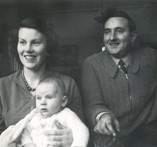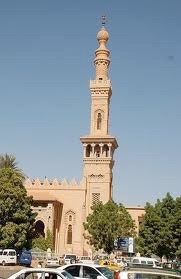glimpses of my life and thoughts

The state school system
In 1950 most state schools were based on a tripartite system: grammar, secondary modern and technical, the former taking in about 25% of pupils not going to private schools. Which school you went to depended on how well you did in the 11 plus exam. A handful of local authorities still (in 2011) retain this system which dates from 1944 onwards.
Direct grant grammar school status was given to just 179 privately endowed secondary schools. About 50% of their income came directly from the state.
In the sixties all three components of the system were gradually replaced in full or in part by mixed ability comprehensive schools, and direct grant schools were phased out. Many of them, including Haberdashers, became independent, others joined the state system and a few closed.
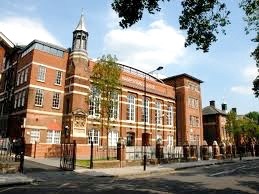
Haberdashers Aske’s 1950-1953
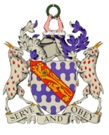
Tradition and formality were the order of the day, as these incidences illustrate:
-
•During my first week in a coffee break we assembled in the staff common room. Holding a cup and a biscuit I sat in one of the few armchairs. Within seconds the senior master came up to me. ‘This chair is the Deputy Head’s’, he said. I rose to observe a dozen staring, disapproving faces from other members of staff.
-
•Sensing that my style of approach in the classroom was to foster good personal relations with the pupils the Headmaster called me into his palatial office a few weeks after I arrived. ‘A word from the wise’, he said. ‘You should know that to be a successful teacher you have to set yourself up on a pedestal. Never allow the boys to know you as a fellow human being’. I was too young, too green, too vulnerable and too cowardly to argue.
-
•One afternoon during break a window was smashed. As nobody owned up to this heinous crime the whole class were beaten, the boys queuing up in the corridor to await their turn. I happened to be walking by at the time and through a window I could see what was happening inside. I shall never forget the expression of sheer pleasure on the face of the deputy head as he wielded the cane on the bottoms of his compliant victims. At least their trousers were properly in place!
There were lighter moments, though. During my first encounter with a group of 14-16 year-olds, the classroom telephone rang within moments of the start of the period. Up jumped a lad from the back, seizing the instrument from my hand saying, ‘Telephone monitor, Sir’. ‘Yes, . . .’, he spoke into the instrument. ‘ . . . certainly, Sir’. He replaced the instrument. ‘That was the Headmaster, Sir. He would like 15 strong boys to move all the rugby posts into position, right now.’ Within moments the whole class had disappeared. My naivety knew no bounds. When I went to the staff room to report what had happened colleagues were unable to contain their mirth. I never discovered how they wired up that telephone.
End of term reports were taken less seriously by some teachers than others. The Head of Music wrote ‘satisfactory’ for just about everyone, so we added a few empty unnamed reports at the bottom of his pile. These non-persons were also ‘satisfactory’. And one classics class invented a fictitious pupil improbably called Bill Sykes on whose behalf, from time to time, someone would respond ‘Here, Sir’ when the register was called. Assignments were forged in his name and duly marked by the absent-minded teacher. One of the staff concocted a form in the name of Bill Sykes, whose report for Latin read, ‘He has produced some promising work when present’.
We all looked forward to the end of the Autumn Term, not least because it had become a tradition for the Board of Governors to pay a Christmas bonus to all staff. This amounted to the princely sum of £50, equivalent to a full month’s pay at the time. This just about kept the accounts in black but my marriage to Anne and the birth of our firstborn Keith stretched our finances to the limit. In any case, after 3 years in a school that was out of keeping with my own attitude to education, it was time to move on.
We were both in the mood for adventure and change. In 1953 the opportunity came for a teaching post with the Sudan Government, at more than treble the salary I could aspire to in the UK.


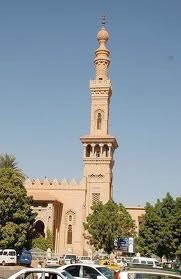
Hampstead (comprehensive)School, formerly housing Haberdashers Aske’s. Actually in Cricklewood!




Three vehicles that I owned sequentially during these years. From the top, 120cc BSA Bantam (an icon of its time) on which Anne and I toured all over the country with back packs youth hosteling; 192cc Velocette LE (the whisper-quiet water-cooled bike ridden by the police); Triumph Mayflower (one of the first post-war cars, costing £625, around a year’s salary. The only car parked at Haberdashers was owned by the headmaster, until this one.
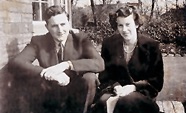
My long and affectionate engagement to Kathleen, the sister of a college friend, had come to an end a year or more before I met Anne Bowman. She remains a friend of us both.
Here we are in April 1951, the month of our marriage. Anne has been my lover, best friend and companion ever since, and we celebrated our diamond wedding in April 2011.
The proud parents with our 2-month son Keith in December 1952
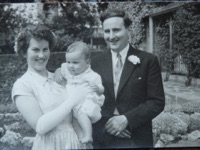

Anne’s parents at our wedding. They welcomed me into the family immediately and our family life was much enriched by their love, friendship and support for over 40 years.

My ’Auntie’ was thrilled to live long enough to welcome the son of the baby she and her sister had unofficially fostered 25 years previously.
